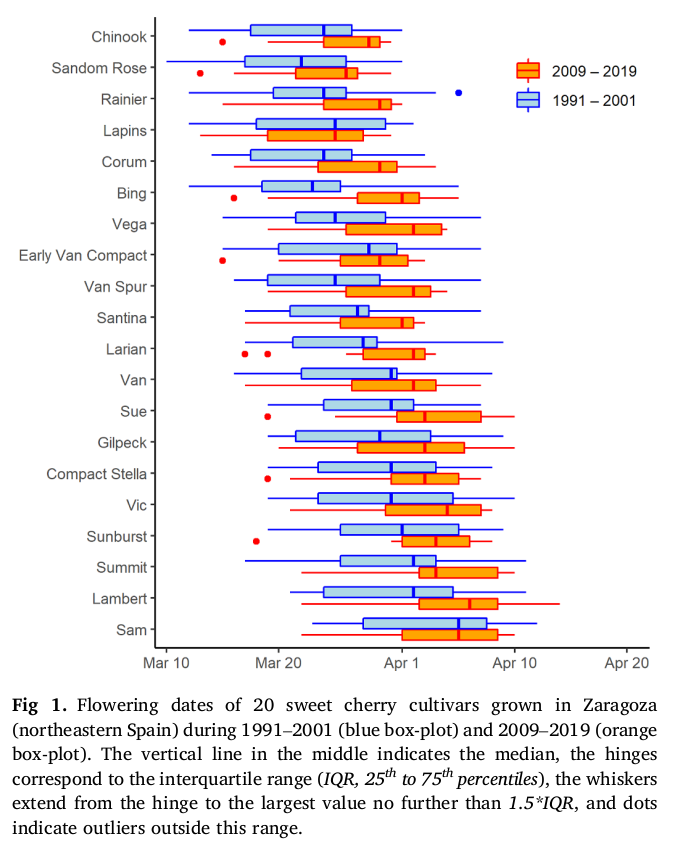Understanding how temperature regulates phenology in temperate fruit trees remains a challenge. Trees can enter dormancy during autumn-winter and resume active phenological development in spring in response to warm conditions. Phenology and flowering mark the adaptation of a cultivar to a certain area and directly affect fruit production and yield. In a new publication, we established the agroclimatic requirements, chilling and forcing needs, for 20 sweet cherry cultivars from North America (USA and Canada) breeding programs. We analyzed the 20 years of phenology data of the cultivar collection in Spain with PLS regression analysis, a methodology implemented in the ‘chillR’ package for R. The agro-climatic requirements of sweet cherry cultivars are valuable information for growers. They also help us understand phenology trends in a global warming context. This study resulted from an international collaboration between the HortiBonn group at the University of Bonn (Germany) and the Agrifood Research and Technology Centre of Aragón (Spain). The article was published in Agricultural and Forest Meteorology. It can be accessed here: https://www.sciencedirect.com/science/article/abs/pii/S0168192321001696 Two of our institute’s researchers contributed to this work: Prof. Dr. Eike Luedeling, and Dr. Erica Fadón-Adrián.
Fadón E, Rodrigo J, Luedeling E, 2021. Cultivar-specific responses of sweet cherry flowering to rising temperatures during dormancy. Agricultural and Forest Meteorology 307, article 108486. doi: https://doi.org/10.1016/j.agrformet.2021.108486
